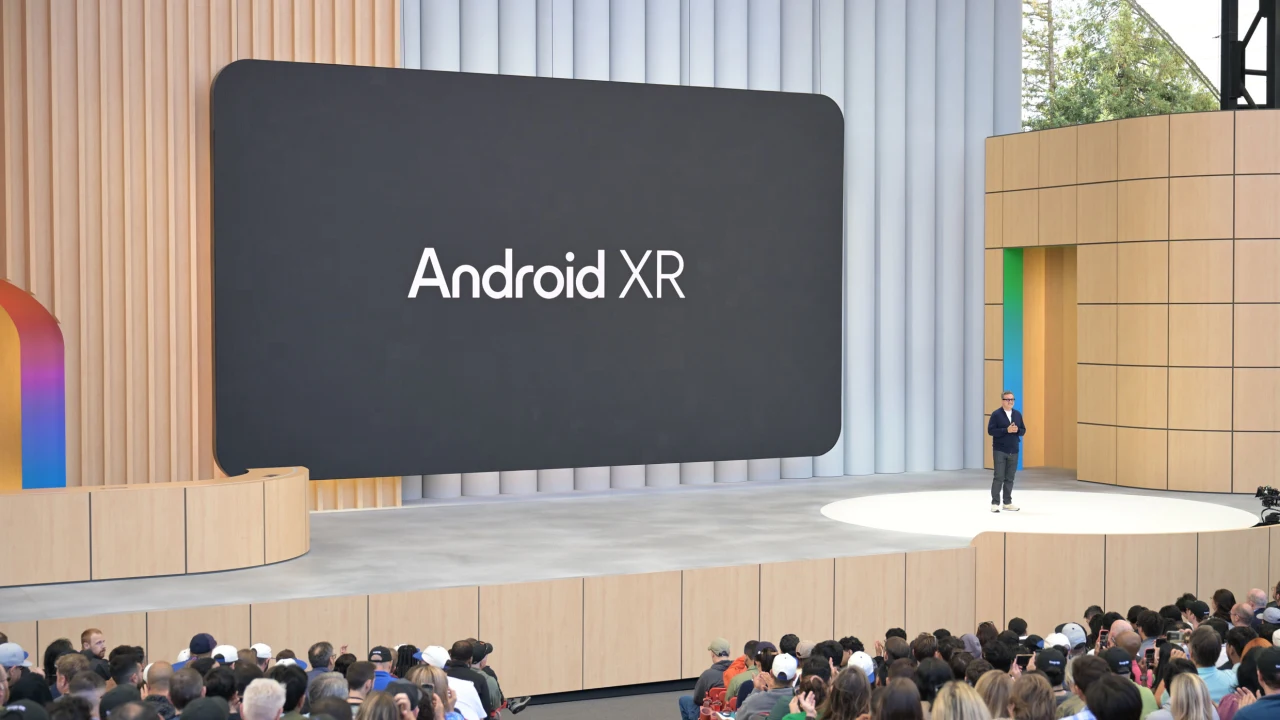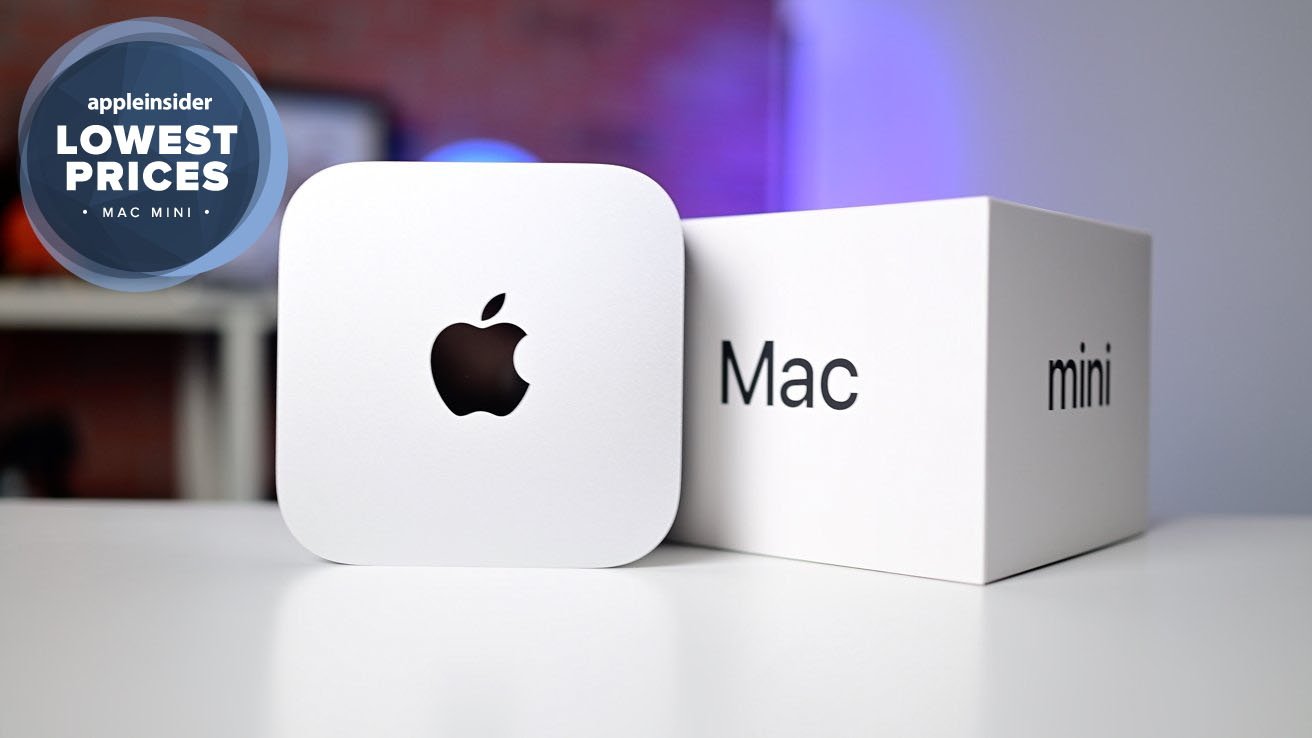After Google IO’s big AI reveals, my iPhone has never felt dumber
Macworld
I can’t believe I’m about to state this, but I’m considering switching from iOS to Android. Not right now, but what I once considered an absurd notion is rapidly becoming a realistic possibility. While Apple may have an insurmountable lead in hardware, iPhones and Android phones are no longer on par with each other when it comes to AI and assistants, and the gap is only growing wider. At its annual I/O conference on Tuesday, Google didn’t just preview some niche AI gimmicks that look good in a demo; it initiated a computing revolution that Apple simply won’t be able to replicate anytime soon, if ever.
Actions speak louder than words
The first thing I noticed during the main I/O keynote was how confident the speakers were. Unlike Apple’s canned Apple Intelligence demo at last year’s WWDC, Google opted for live demos and presentations that only reflect its strong belief that everything just works. Many of the announced features were made available on the same day, while some others will follow as soon as this summer. Google didn’tdisplay nonexistent concepts and mockups or pre-record the event. It likely didn’t make promises it can’t keep, either.
If you have high AI hopes for WWDC25, I’d like to remind you that the latest rumors suggest Apple will ignore the elephant in the room, possibly focusing on the revolutionary new UI and other non-AI goods instead. I understand Apple’s tough position—given how last year’s AI vision crumbled before its eyes—but I’d like to think a corporation of that size could’ve acquired its way into building a functional product over the past 12 months. For the first time in as long as I can remember, Google is selling confidence and accountability while Apple is hiding behind glitzy smoke and mirrors.
Google’s demos at IO showed the true power of AI.Foundry
Apple’s tight grip will only suffocate innovation
A few months ago, Apple added ChatGPT to Siri’s toolbox, letting users rely on OpenAI’s models for complex queries. While a welcome addition, it’s unintuitive to use. In many cases, you need to explicitly ask Apple’s virtual assistant to use ChatGPT, and any accidental taps on the screen will dismiss the entire conversation. Without ChatGPT, Siri is just a bare-bones voice command receiver that can set timers and, at best, fetch basic information from the web.
Conversely, Google has built an in-house AI system that integrates fully into newer versions of Android. Gemini is evolving from a basic chatbot into an integral part of Google’s ecosystem. It can research and generate proper reports, video chat with you, and pull personal information from your Gmail, Drive, and other Google apps.
Gemini is already light-years ahead of Siri—and it’s only getting better.Foundry
Google also previewed Project Astra, which will let Gemini fully control your Android phone, thanks to its agentic capabilities. It’s similar to the revamped Siri with on-screen context awareness, but much more powerful. While, yes, it’s still just a prototype, Google has seemingly delivered on last year’s promises. Despite it infamously killing and rebranding projects all the time, I actually believe its AI plans will materialize because it has been constantly shipping finished products to users.
Unlike Apple, Google is also bringing some of its AI features to other platforms. For example, the Gemini app for iPhone now supports the live video chat feature for free. There are rumors that Apple will open up some of its on-device AI models to third-party app developers, but those will likely be limited to Writing Tools and Image Playground. So even if Google is willing to develop more advanced functionalities for iOS, Apple’s system restrictions would throttle them. Third-party developers can’t control the OS, so Google will never be able to build the same comprehensive tools for iPhones.
Beyond the basics
Google’s AI plan doesn’t strictly revolve around its Gemini chatbot delivering information. It’s creating a new computing experience powered by artificial intelligence. Google’s AI is coming to Search and Chrome to assist with web browsing in real time.
For example, Gemini will help users shop for unique products based on their personal preferences and even virtually try clothes on. Similarly, other Google AI tools can code interfaces based on text prompts, generate video clips from scratch, create music, translate live Meet conferences, and so on. Now, I see how dystopian this all can be, but with fair use, it will be an invaluable resource to students and professionals.
Meanwhile, what can Apple Intelligence do? Generate cartoons and proofread articles? While I appreciate Apple’s private, primarily on-device approach, most users care about the results, not the underlying infrastructure.
Google’s Try It On mode will use AI to show how something will look before you buy it.Foundry
The wrong path
During I/O, Google shared its long-term vision for AI, which adds robotics and mixed-reality headsets to the equation. Down the road, the company plans to power machines using the knowledge its AI is gaining each day. It also demoed its upcoming smart glasses, which can mirror Android phone alerts, send texts, translate conversations in real time, scan surrounding objects, and much, much more.
While Apple prioritized the Vision Pro headset no one asked for, Google has been focusing its efforts on creating the sleek, practical device users actually need—a more powerful Ray-Ban Meta rival. Before long, Android users will be rocking stylish eyewear and barely using their smartphones in public. Meanwhile, iPhone users will likely be locked out of this futuristic experience because third-party accessories can’t read iOS notifications and interact with the system in the same way.
Apple is running out of time
iOS and Android launched as two contrasting platforms. At first, Apple boasted its stability, security, and private approach, while Google’s vision revolved around customization, ease of modding, and openness. Throughout the years, Apple and Google have been learning from each other’s strengths and applying the needed changes to appease their respective user bases.
Apple Intelligence had priomise but Apple has failed to deliver its most ambitious features.Foundry
Recently, it seemed like the two operating systems were finally intersecting: iOS had become more personalizable, while Android deployed stricter guardrails and privacy measures. However, the perceived overlap only lasted for a moment—until the AI boom changed everything.
The smartphone as we know it today seems to be fading away. AI companies are actively building integrations with other services, and it’s changing how we interact with technology. Mobile apps could become less relevant in the near future, as a universal chatbot would perform the needed tasks based on users’ text and voice prompts.
Google is slowly setting this new standard with Android, and if Apple can’t keep up with the times, the iPhone’s relevancy will face the same fate as so many Nokia and BlackBerry phones. And if Apple doesn’t act fast, Siri will be a distant memory.
#after #google #ios #big #revealsAfter Google IO’s big AI reveals, my iPhone has never felt dumber
Macworld
I can’t believe I’m about to state this, but I’m considering switching from iOS to Android. Not right now, but what I once considered an absurd notion is rapidly becoming a realistic possibility. While Apple may have an insurmountable lead in hardware, iPhones and Android phones are no longer on par with each other when it comes to AI and assistants, and the gap is only growing wider. At its annual I/O conference on Tuesday, Google didn’t just preview some niche AI gimmicks that look good in a demo; it initiated a computing revolution that Apple simply won’t be able to replicate anytime soon, if ever.
Actions speak louder than words
The first thing I noticed during the main I/O keynote was how confident the speakers were. Unlike Apple’s canned Apple Intelligence demo at last year’s WWDC, Google opted for live demos and presentations that only reflect its strong belief that everything just works. Many of the announced features were made available on the same day, while some others will follow as soon as this summer. Google didn’tdisplay nonexistent concepts and mockups or pre-record the event. It likely didn’t make promises it can’t keep, either.
If you have high AI hopes for WWDC25, I’d like to remind you that the latest rumors suggest Apple will ignore the elephant in the room, possibly focusing on the revolutionary new UI and other non-AI goods instead. I understand Apple’s tough position—given how last year’s AI vision crumbled before its eyes—but I’d like to think a corporation of that size could’ve acquired its way into building a functional product over the past 12 months. For the first time in as long as I can remember, Google is selling confidence and accountability while Apple is hiding behind glitzy smoke and mirrors.
Google’s demos at IO showed the true power of AI.Foundry
Apple’s tight grip will only suffocate innovation
A few months ago, Apple added ChatGPT to Siri’s toolbox, letting users rely on OpenAI’s models for complex queries. While a welcome addition, it’s unintuitive to use. In many cases, you need to explicitly ask Apple’s virtual assistant to use ChatGPT, and any accidental taps on the screen will dismiss the entire conversation. Without ChatGPT, Siri is just a bare-bones voice command receiver that can set timers and, at best, fetch basic information from the web.
Conversely, Google has built an in-house AI system that integrates fully into newer versions of Android. Gemini is evolving from a basic chatbot into an integral part of Google’s ecosystem. It can research and generate proper reports, video chat with you, and pull personal information from your Gmail, Drive, and other Google apps.
Gemini is already light-years ahead of Siri—and it’s only getting better.Foundry
Google also previewed Project Astra, which will let Gemini fully control your Android phone, thanks to its agentic capabilities. It’s similar to the revamped Siri with on-screen context awareness, but much more powerful. While, yes, it’s still just a prototype, Google has seemingly delivered on last year’s promises. Despite it infamously killing and rebranding projects all the time, I actually believe its AI plans will materialize because it has been constantly shipping finished products to users.
Unlike Apple, Google is also bringing some of its AI features to other platforms. For example, the Gemini app for iPhone now supports the live video chat feature for free. There are rumors that Apple will open up some of its on-device AI models to third-party app developers, but those will likely be limited to Writing Tools and Image Playground. So even if Google is willing to develop more advanced functionalities for iOS, Apple’s system restrictions would throttle them. Third-party developers can’t control the OS, so Google will never be able to build the same comprehensive tools for iPhones.
Beyond the basics
Google’s AI plan doesn’t strictly revolve around its Gemini chatbot delivering information. It’s creating a new computing experience powered by artificial intelligence. Google’s AI is coming to Search and Chrome to assist with web browsing in real time.
For example, Gemini will help users shop for unique products based on their personal preferences and even virtually try clothes on. Similarly, other Google AI tools can code interfaces based on text prompts, generate video clips from scratch, create music, translate live Meet conferences, and so on. Now, I see how dystopian this all can be, but with fair use, it will be an invaluable resource to students and professionals.
Meanwhile, what can Apple Intelligence do? Generate cartoons and proofread articles? While I appreciate Apple’s private, primarily on-device approach, most users care about the results, not the underlying infrastructure.
Google’s Try It On mode will use AI to show how something will look before you buy it.Foundry
The wrong path
During I/O, Google shared its long-term vision for AI, which adds robotics and mixed-reality headsets to the equation. Down the road, the company plans to power machines using the knowledge its AI is gaining each day. It also demoed its upcoming smart glasses, which can mirror Android phone alerts, send texts, translate conversations in real time, scan surrounding objects, and much, much more.
While Apple prioritized the Vision Pro headset no one asked for, Google has been focusing its efforts on creating the sleek, practical device users actually need—a more powerful Ray-Ban Meta rival. Before long, Android users will be rocking stylish eyewear and barely using their smartphones in public. Meanwhile, iPhone users will likely be locked out of this futuristic experience because third-party accessories can’t read iOS notifications and interact with the system in the same way.
Apple is running out of time
iOS and Android launched as two contrasting platforms. At first, Apple boasted its stability, security, and private approach, while Google’s vision revolved around customization, ease of modding, and openness. Throughout the years, Apple and Google have been learning from each other’s strengths and applying the needed changes to appease their respective user bases.
Apple Intelligence had priomise but Apple has failed to deliver its most ambitious features.Foundry
Recently, it seemed like the two operating systems were finally intersecting: iOS had become more personalizable, while Android deployed stricter guardrails and privacy measures. However, the perceived overlap only lasted for a moment—until the AI boom changed everything.
The smartphone as we know it today seems to be fading away. AI companies are actively building integrations with other services, and it’s changing how we interact with technology. Mobile apps could become less relevant in the near future, as a universal chatbot would perform the needed tasks based on users’ text and voice prompts.
Google is slowly setting this new standard with Android, and if Apple can’t keep up with the times, the iPhone’s relevancy will face the same fate as so many Nokia and BlackBerry phones. And if Apple doesn’t act fast, Siri will be a distant memory.
#after #google #ios #big #reveals













